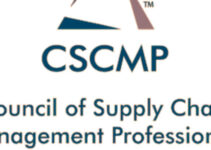The retail industry comprises all those businesses and companies that directly sell their products and goods to the end consumers. The retailers procure products and goods in mass quantities from the manufacturers, wholesalers, and distributors; and then sell in small quantities to the customers. Today, we’ll discuss the value chain analysis of Retail Industry supply chain analysis; primary and supporting activities in the process of value chain analysis Example Company. They are inbound and outbound logistics, operations, marketing, and customer service; infrastructure, HRM, technology, and procurement as an application of the value chain analysis process.
Type of Retail Stores in Retail Industry
- Specialty Stores
- Department Stores
- Convenience Stores
- Grocery Stores
Retail Sale Products in the Retail Industry
- Pharmaceutical product
- Jewelry
- Housewares
- Groceries
- Electronics
- Apparel
Top Companies in the Retail Industry
- Costco
- Walmart
- Amazon
- Target
- Aldi
- JD
- IKEA
The Value chain analysis of Retail Industry supply chain analysis would analyze the primary and supporting activities in the process of value chain analysis. They’re inbound and outbound logistics, operations, marketing, and services; infrastructure, HRM, technology, and procurement. Here’s supply chain analysis of Retail Industry value chain analysis company example as follows;
Value Chain Analysis of Retail Industry
Let’s discuss the primary and supporting activities involved in the process of value chain analysis of Retail Industry supply chain analysis. It is an application of value chain analysis based on Porter’s model; some of the key elements and components of value chain analysis are as follows;
Primary Activities of Retail Industry
The primary activities are directly involved in the production of products and goods and adding value to the retail company. Some of the five main primary activities in the value chain analysis of Retail Industry supply chain analysis are as follows;
Inbound Logistics of Retail Industry
I-Sourcing Raw Material
In order to create the finished products, retail product manufacturers need to source raw materials, supplies, and goods from farmers, producers, and raw material suppliers. Sourcing the quality and cost-efficient raw material is the key to the effectiveness of the entire value chain process. High-quality and low-cost supplies would lead the company to develop efficient products.
II-Suppliers Relationship
The manufacturer of retail products focuses on building a better and more effective long-term relationship with suppliers and vendors in various countries across the globe. It allows them to ensure the smooth availability of raw supplies, materials, and components for the production and manufacturing of retail finished products.
Outbound Logistics of the Retail Industry
I-Transportation & Distribution
Retail Industry partners up with various 3rdparty logistics service providers for the transportation and distribution of products and goods. They move raw materials, supplies, and components from the suppliers to the manufacturers, warehouses, and distribution facilities, and then to the end consumers.
II-Efficient Transport Operations
Without effective and efficient transportation and distribution channels; it causes delays in the supply of raw material to the manufacturing facilities, and stuck finished goods in the warehouses and distribution facilities would increase the overall operational cost.
Operations of Retail Industry
I-Production & Manufacturing Facilities
The retail product manufacturing and production factories receive raw supplies, materials, and components from authorized and verified suppliers and vendors. They correctly perform various operations, and employ the right quantity of material and processes for the production of the finished goods.
II-Warehouses & Distribution Centers
After manufacturing the finished retail goods, they deliver the finished goods to the warehouses and distribution centers. They temporarily store, label, package, and organize the finished goods before shipping them to the retail stores, grocery stores, and convenience stores relevant to their orders’ needs and requirements.
Marketing & Sales of Retail Industry
I-Marketing & Advertisement
Retail businesses and companies run various types of marketing and advertisement campaigns for the promotion of their retail product and brand. They employ multiple media channels to approach the target segments of the customer market.
II-Retail Stores
The retail stores are at the end of the channels in the Retail Industry. They keep and maintain a large variety of small products and goods in various categories and offer them to the customers. However, they allow customers to physically check the product and read its description and labels before buying it.
Services of Retail Industry
Retail stores offer various services to customers to improve the overall customer satisfaction level and promote brand loyalty. Some of the main services that retail stores offer in the retail industry are as follows;
- Home delivery service
- Online shopping
- Unique in-store shopping experience
- User-friendly platform
- Convenient shopping experience
- Easy product return process
Supporting Activities of Retail Industry
Supporting activities are indirectly involved in the production of products and goods and adding value to the retail company. Some of the main supporting activities in the value chain analysis of Retail Industry supply chain analysis are as follows;
Infrastructure of Retail Industry
The retail industry has established a very large infrastructure of production and manufacturing facilities, warehouses, distribution centers, and a retail chain network of stores. The well-organized infrastructure plays a key role in the smooth production and manufacturing of retail product operations, and it focuses on timely delivering the finished goods to the end consumers.
HRM of Retail Industry
Retail Industry has given millions of people employment opportunities in various countries across the world. The human resource management department plays a key role in rightly allocating the workforce and employees to various operations; recruiting and selecting the right employees, and conducting training programs to improve their skills and expertise.
Technological Development of Retail Industry
Retail Industry has invested a significant amount of capital resources in research and technological development. It could be in the form of e-commerce stores, automation technology, data analytical tools, machine learning, and AI. They help the company to improve the overall customer satisfaction level and offer a better user experience while shopping.
Procurement of Retail Industry
Retail companies are highly careful and cautious about ethical sourcing and procurement of raw materials and finished goods. They make sure that the sourcing supplier is engaging in the right ethical practices and complying with human rights and regulatory requirements and standards of the country.
Conclusion: Retail Industry Value Chain Analysis Example Company | Application of Value Chain Analysis Process |Process of Value Chain Analysis
After an in-depth study of the value chain analysis of Retail Industry; we have realized that Retail Industry plays a key role in our daily routine life shopping for casual things. If you are learning about the Retail Industry value chain analysis example company; then you should keep in mind the abovementioned primary and supporting activities. They’re inbound and outbound logistics; operations, marketing and sales, and services; infrastructure, procurement, HRM, and technological development as an application of the value chain analysis process.
Ahsan is an accomplished researcher and has a deep insight in worldly life affairs. He goes Live 3 days a week on various social media platforms. Other than research writing, he’s a very interesting person.


